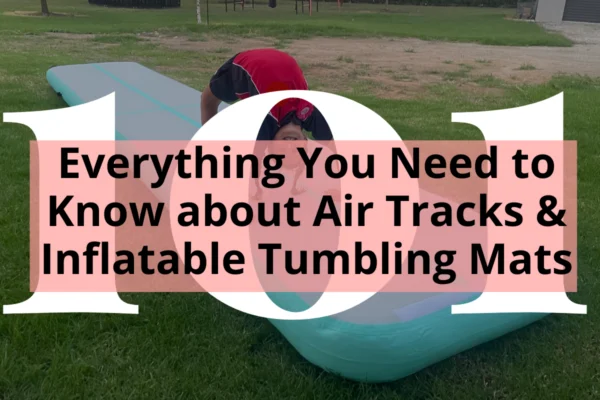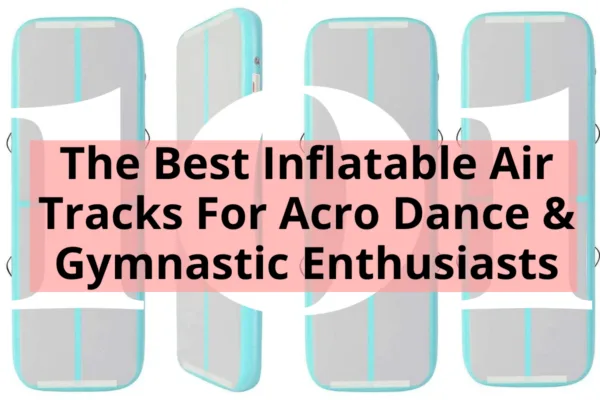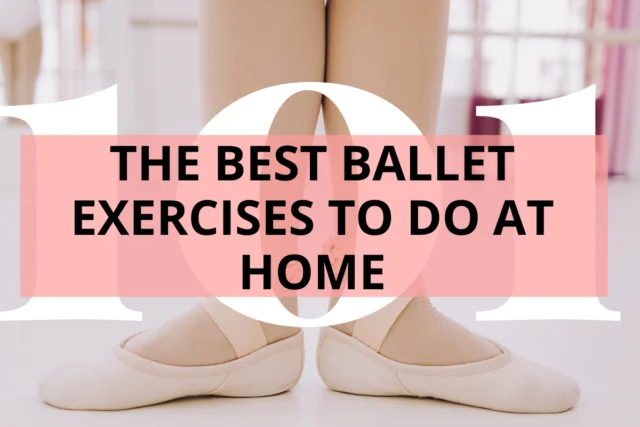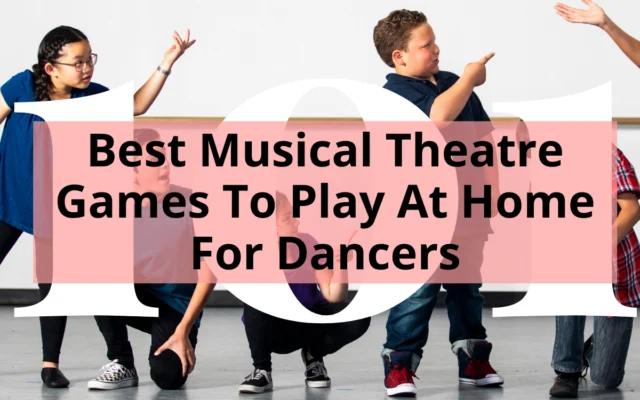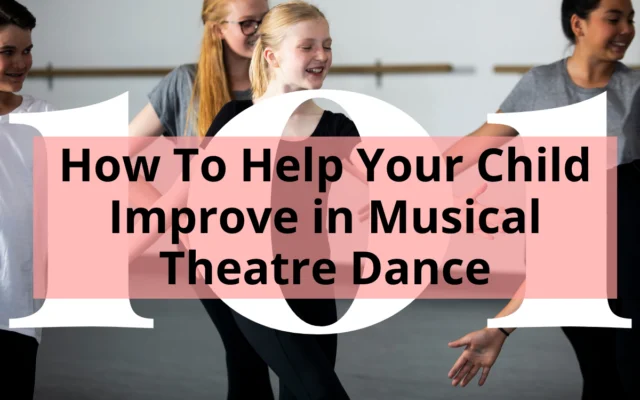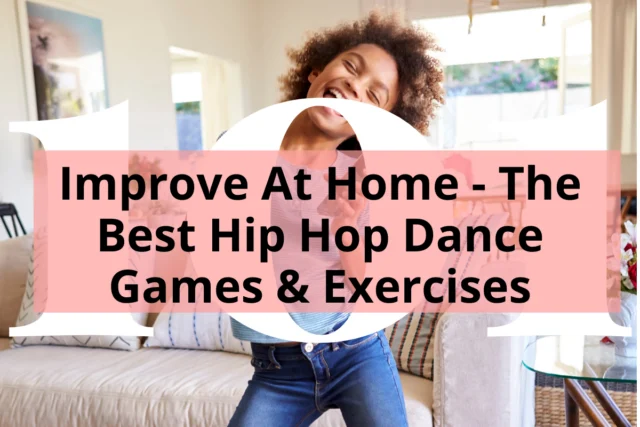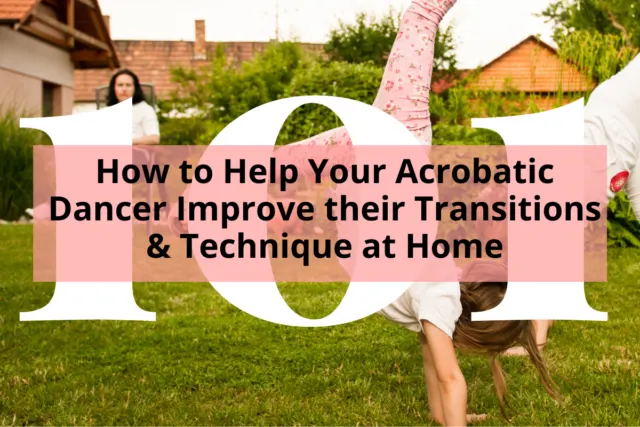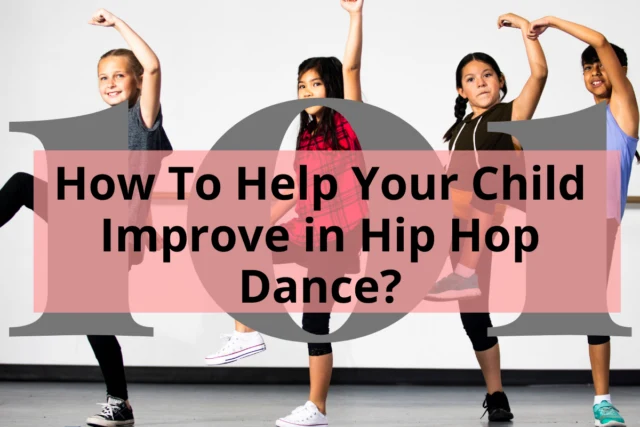Dancers who practice at home have a leg up on dancers who don’t, and luckily, there are ways to make practicing jazz dance fun! From focused exercises to silly games, practicing jazz dance at home does take some effort, but the results will be worth it when your child and their teacher see their progress.
To help your child improve in jazz dance at home, you will want to focus on exercises for technique, like isolations and balances, as well as exercises for musicality, including visualization and dynamics.

Before you embark on a home training program, no matter how basic, you should be familiar with the style of dance that’s being practiced.
For more information on what jazz dance entails, check out our articles What To Expect From Your Child’s First Jazz Class, as well as Jazz Dance History and Timeline – What You Need To Know!
Jazz Dance Exercises For Technique
Jazz dance utilizes many different techniques, some coming from the ballet world, some borrowed from modern dance, and some techniques all its own.
While it’s impossible to say what exercises are the “best”, there are a few that stand out as very important for jazz dance in particular, and those are isolations and balances.
Isolations refer to the singular movements of one part of the body alone. In jazz dance, we focus on isolating our head, shoulders, rib cage, and hips.
Isolations can be difficult for young dancers to grasp because, in daily life, humans are more used to full-body movements rather than small, contained movements.
With Simon Says Isolations, learning becomes a fun game!
Simon Says Isolations
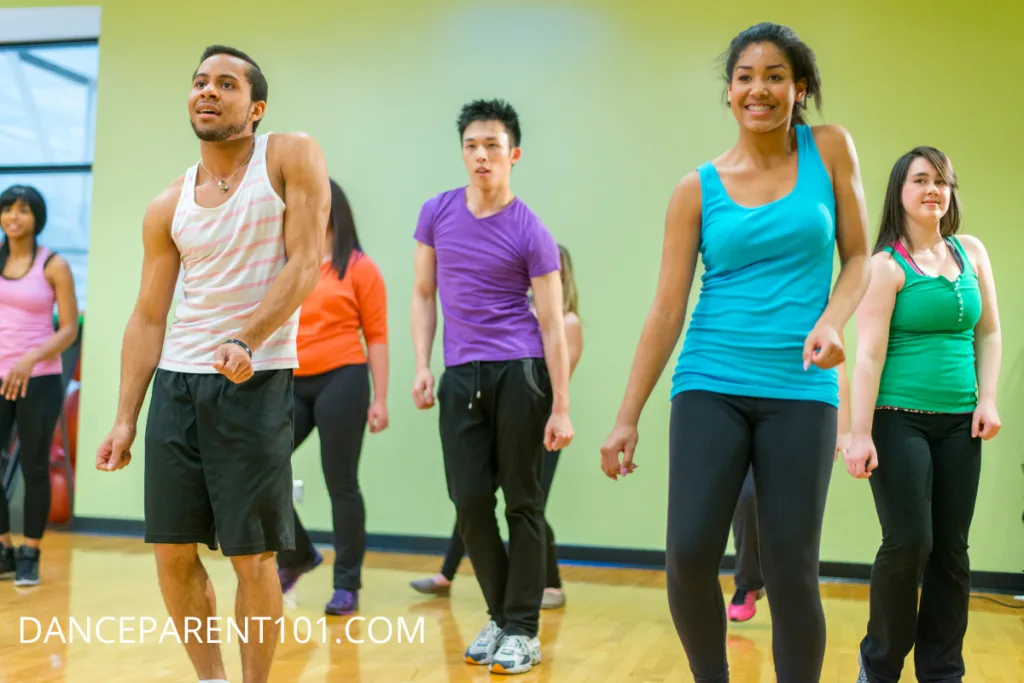
In Simon Says Isolations, you will be playing a typical game of Simon Says, but incorporating jazz isolations to music. This game can be played one on one, or with a group of friends.
Step One
First, find a space to play. Because Simon Says is fairly stationary, your space doesn’t have to be big! Then, choose a song. Any song you like will do!
Step Two
Because we are in jazz dance world, the next step is to have the dancers stand in a parallel jazz second position, feet hip-width apart, feet, knees, and hips all facing forward.
The dancers’ knees are in a slight bend, tummies in, and shoulder blades pulled back and down.
Step Three
The leader will call out “Simon Says ‘Head Tilts’”, indicating that the dancers are to tilt their heads to the right, back to center, to the left, and back to center.
Be mindful of the beat of the song. You want each movement to take up one count. Allow the head tilts to go on for however long the leader chooses before moving on to the next choice.
Step Four
Then, the leader can choose the next movement. Remember, you can choose from:
- Head isolations (looking right to left, tilting right to left, looking up and down or in a circle)
- Shoulder isolations (shrugging both or one shoulder up and down, rolling both or one shoulder forwards or backward, or shifting the shoulders front and back)
- Rib cage isolations (ribs right to left, front to back, or in a circle)
- Hip isolations (hips to the right and left, front to back, or in a circle).
Feel free to actually play the game to get people out by not saying “Simon Says” before a command, but if you are really trying to get the dancers to practice, you can eliminate that part of the game!
Passé Balances Across the Floor
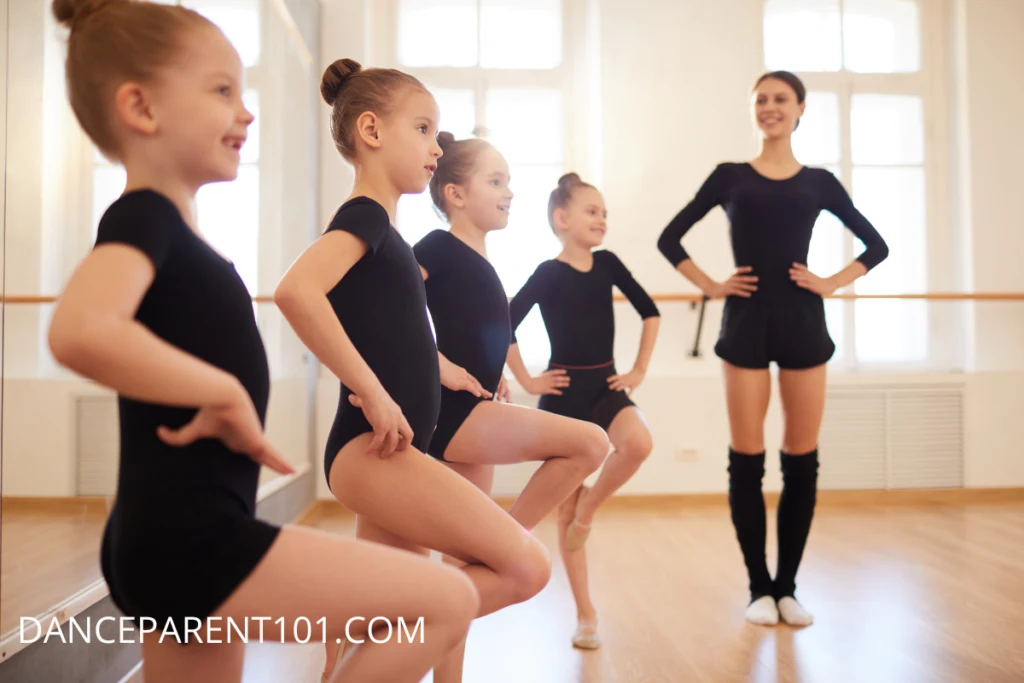
Practicing passé balances is something nearly all dancers do throughout their training, regardless of level. Starting early is sure to help your dancer gain consistency of balance for their pirouettes.
For jazz dance, balance comes into play when executing pirouettes, battements, and landing leaps and jumps.
All young dancers dream of the day they can pull off multiple pirouettes, but without the proper balance, a triple turn is nearly impossible!
Begin by finding a long stretch of space to practice. A hallway works well for this exercise.
Step One
First, your dancer will start by standing in a jazz first position, or ballet sixth position, which is simply feet together in parallel, knees over ankles over toes. Arms can be down by the side of the body.
Step Two
She will then step forward with her left foot into a small jazz 4th position prep, with the left foot in a plié, right foot behind with the ball of the foot pressed into the floor and the heel popped.
Arms shift from the side of the body straight into a jazz 3rd position, right arm reaching out in front and left arm reaching out to the side.
Step Three
Next, the dancer will push off from the back foot into a parallel passé, with the standing leg straightening and the foot flat on the ground. Arms will come into a high first position. Hold for 2 counts.
Step Four
From there, step down onto the right foot into a small jazz 4th position prep (the same as before, only on the opposite side). Take care to notice if the prep is larger or smaller than before.
If it’s larger, remind the dancer to adjust their position accordingly. If it’s smaller, and the knee is far ahead of the standing toe, the dancer should widen the stance.
Step Five
Then, pull the left leg into passé, straightening the standing leg and standing on a flat foot. Balance for 2 counts.
Continue this process all the way down your hallway or dance space. You may then add the challenge of pushing up to relevé once the balance on a flat foot has become easy.
Jazz Dance Exercises For Musicality

If you watch famous jazz dancers, you will notice a quality that maybe you can’t quite name, but when you see it, you recognize it.
Chances are, this quality is musicality, or how a dancer relates to and interprets the music they’re moving to.
Musicality, while inherent to a lot of people, is also something that needs to be honed and developed for some dancers.
Teaching musicality can be tricky, so to supplement what is being taught in jazz class, at home you can use the Pick A Dynamic exercise, as well as Sit-Listen-Visualize exercise to help your dancer work on their musicality.
Pick A Dynamic
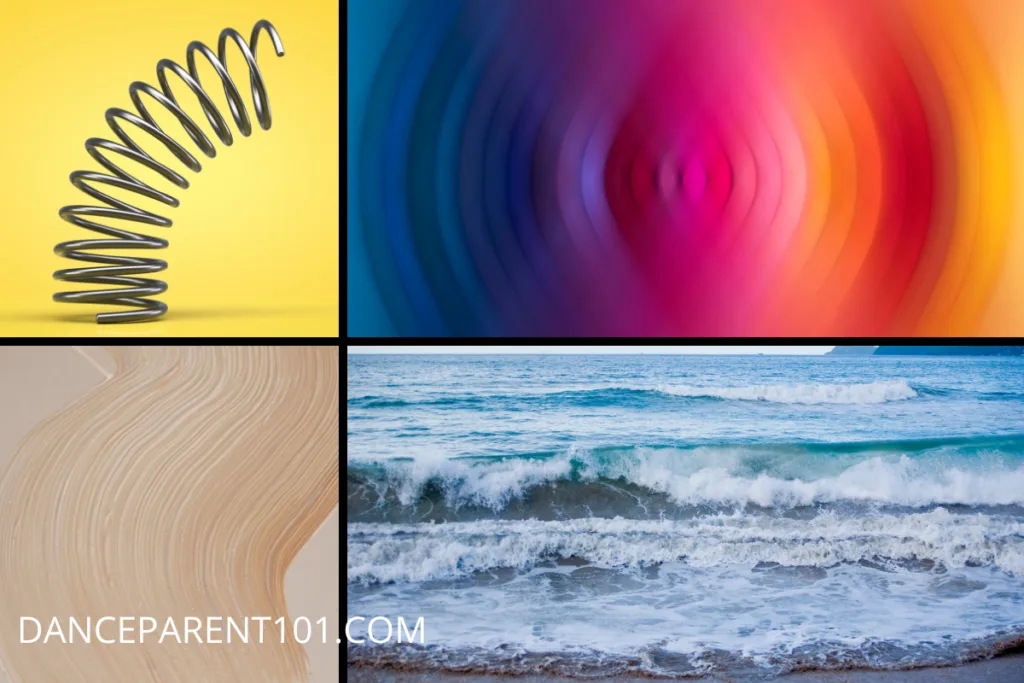
Dynamics, or the quality of movement that a dancer brings to a step, are what sets good dancers apart from great dancers.
Similarly to speech, if we were to dance in a monotone, that would be quite boring. But when we add dynamics to speech or dance, people are more interested in what we have to say!
The most used dynamics in dance are:
- Swinging – a swaying pendulum motion
- Sustained – smooth and even movement
- Percussive – sharp and choppy motions
- Suspended – stillness and balanced movements
- Collapsed – released and relaxed motions
- Vibratory – wiggling, shaking movements
To begin with and to become familiar with the dynamics, you could get your dancer to dance along with Samantha Bellerose, the creator of Dance Parent 101, as well as of Move Dance Learn in the Youtube video above.
HOW TO PLAY THE GAME
In Pick A Dynamic, it’s helpful to pick a step to apply the dynamic to. You could also use an entire phrase of steps for this exercise.
Step One
First, find a space to dance. This could be your at-home dance studio, a section of the living room, or even out in the backyard. You can choose whether or not to use music for this exercise.
Step Two
Then, choose a step or phrase of steps. If you want to start with something easy, I would suggest a chassé. If you wanted to go even more simpler, you could use walking.
Check out the article What To Expect From Your Child’s First Jazz Class for a list of jazz steps you could use with video examples!
Step Three
Have your dancer or dancers move around the space with the chosen step. Then, call out a dynamic – “Percussive”. The dancers then have to do the step while applying that dynamic.
Then, call out a different dynamic – “Sustained”. The dancers then have to do the same step while applying that dynamic.
For a percussive chassé, this could mean loud feet, a quick tempo, and a grounded, down-low approach. If you call out “Sustained”, you might see smooth, even timing, with a gliding approach.
APPLY THE LEARNING FROM THE GAME
If you have more than one dancer, give them a chance to show each other what they come up with, or video your dancer so they can watch themselves to see if they are really bringing out the dynamic with their bodies.
This game has tons of iterations. Feel free to add music, add conditions, change the steps, or combine the dynamics.
Sit-Listen-Visualize
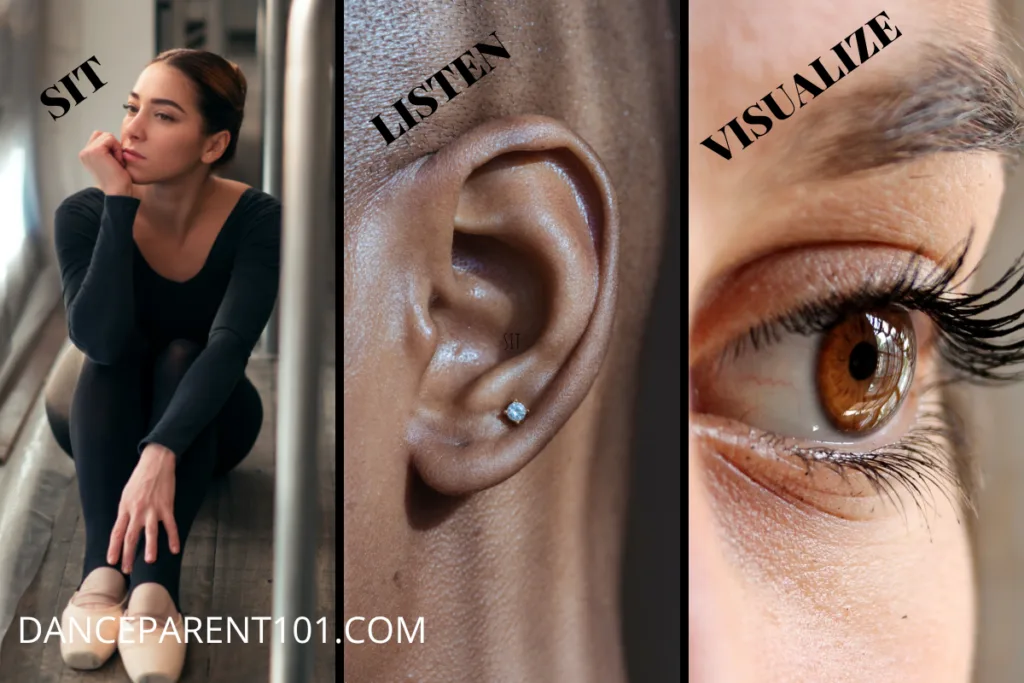
This is an exercise that is mostly experienced internally and is best used with dancers who are either practicing a recital or competition dance, or have a phrase or combo they already know and can recall easily.
Sometimes, if a dancer is having a hard time with physicalizing their musicality, it’s a nice change of pace to have them visualize the choreography instead of doing it.
The power of visualization has been documented in many fields, and dance is just one of the places it can be helpful to get “unstuck”.
Step One
First, pick a quiet spot free from distraction. This can be your child’s dance space, bedroom, or even a closet! You don’t need much room at all for this exercise.
You do, however, need a way to play music, so be sure to have a phone or computer handy.
Step Two
Then, sitting comfortably, have your dancer close their eyes. The first part of this exercise only involves listening. Play the song, and instruct your dancer to simply listen to the music.
The experience of listening can be different for everyone. Some people may instinctively move to the music, others may sit in stillness. There is no right or wrong.
The only goal of this part of the exercise is to internalize the music.
Step Three
When the song is over, you may want to have a conversation about anything you noticed in the music. Was there a drum beat you’ve never heard before?
Perhaps you finally understood that one lyric! Talk about the experience of just listening to the music.
Step Four
Next, replay the song, again with eyes closed, but this time, the dancer is to visualize themselves doing the choreography, either on stage or in the studio.
It helps to remind them to make the world of the visualization as detailed as possible – what are they wearing? Who else is there? What color are the walls? Are there lights?
Apply the Learning From the Game
After you’ve successfully completed the visualization, you can feel free to have your dancer get up and actually do the choreography.
Be on the lookout for any subtle changes in their movements. You can see the benefits of this exercise best over time, so don’t stress if there isn’t any immediate change.
Practicing at home can be very beneficial for dancers looking to up their game in the classroom. With these jazz exercises focusing on technique and musicality, your child will combine two of the most important elements of jazz dance to supplement their work in class. Happy practicing!

